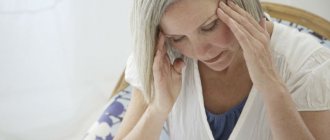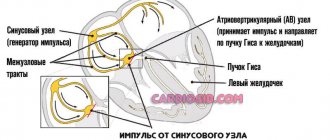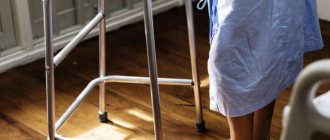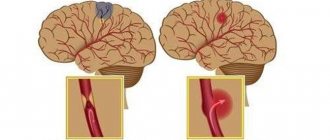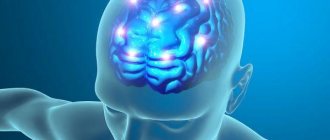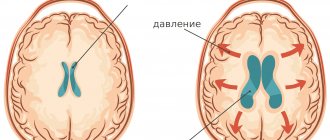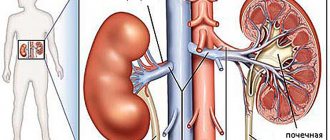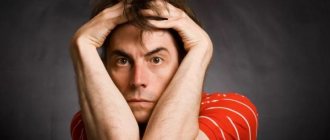ACVA (acute cerebrovascular accident) is a concept that combines a transient ischemic attack and a pre-stroke condition. ACVA is characterized by sudden development and is very dangerous for human health and life, therefore, when its first signs appear, urgent medical attention is necessary. Timely adequate treatment can reduce the severity of the consequences of an attack. To receive qualified assistance for acute stroke, you can contact the Yusupov Hospital, which operates around the clock and provides the necessary assistance in this situation.
What is a stroke
The essence of a stroke is the cessation of blood supply and functioning of a part of the brain as a result of damage to a vessel.
The larger the affected area, the more severe the stroke. Necrosis of a portion of the brain substance is called an infarction [3]. There is a high risk of death in the first few hours, and then in the period up to 28 days after a vascular accident. The annual mortality rate from stroke in the Russian Federation is 374 cases per 100,000 [10]. In 2018, 35% of patients died in the acute period of stroke; by the end of the first year, this figure increases by 15%, and in general, in the first 5 years, the mortality rate of strokes is 44% [11]. The mortality rate from stroke was 92.9 per 100,000 population, and the hospital mortality rate was 19.1% [5].
Long-term disability is most likely for patients who have suffered a stroke. The prevalence of primary disability due to stroke in 2018 was 3.2 per 10 thousand population [2]. Of these, 31% need constant care, 20% have severe mobility limitations, and only 8% return to work [3]. The prevalence of recurrent strokes in 2014 was 0.79%, of which ischemic
strokes account for 87.5% [9].
Movement restoration
This is the first important task of rehabilitation.
Loss of coordination and loss of mobility occurs in 80-90%, of which only 30% of patients remain able to move independently immediately after an attack. In this area, research is continuously being conducted and methods with a high level of efficiency are being developed. Today, three of them are most often used:
- A method for learning a specific skill. A rehabilitation specialist helps the patient set a specific task and solve it. As a result, the patient develops and learns the most productive movement strategy.
- Forced movement therapy. In this case, the limb that was not damaged at the time of the stroke is deliberately immobilized. As a result, the entire load falls on the injured leg/arm. Daily household activity helps restore the functionality of the organ.
- Bilateral training. In this case, motor tasks are performed simultaneously by both the healthy and the injured limb.
Causes of stroke
Depending on the cause of cerebrovascular accident, ischemic and hemorrhagic strokes are distinguished.
Ischemic stroke occurs as a result of blockage of cerebral vessels by a blood clot, when gradually less and less blood flows to an area of the brain. Hemorrhagic stroke develops as a result of rupture of a vessel and hemorrhage in the brain tissue, as a result of which the blood supply to its area abruptly stops. Hemorrhage can be into the subarachnoid space (SAS) or directly into the cerebral substance (ICH). The ratio of ischemic and hemorrhagic strokes is 4-5:1 [4].
Pathologically, a stroke can be cardioembolic, lacunar, atherothrombotic, or another, including unknown, etiology (TOAST classification) [10].
Predisposing factors:
- men from 45 to 59 years old;
- age 70 years and older (for both sexes) [4];
- arterial hypertension;
- atrial fibrillation;
- atherosclerosis of cerebral vessels;
- coagulopathy, thrombophilia, anemia;
- arteriovenous malformations;
- osteochondrosis with damage to the vertebral artery;
- brain tumors;
- dyslipoproteinemia;
- obesity;
- diabetes;
- intermittent claudication;
- mechanical prostheses of heart valves and blood vessels;
- IHD, myocardial infarction less than 6 months before the stroke;
- other cardiac diseases;
- smoking, alcoholism;
- family history of stroke;
- sedentary lifestyle;
- stress [1, 3].
What is ONMK?
The diagnosis of stroke (and the resulting stroke) is established in the event of disturbances in the functioning of the cerebral vessels. When blood circulation is disrupted in a certain area of the brain, part of the nervous tissue dies. This can lead to serious disability or death. A stroke is not yet a stroke, but a condition that can lead to it. The development of stroke indicates that a person urgently needs the help of a qualified neurologist, since a full-fledged stroke or cerebral infarction may soon occur, when the consequences will be much more severe. Decoding the diagnosis of stroke will depend on the type of disorder in the vessels: hemorrhage, blockage or narrowing of the vessel, etc. The name of the disease of acute stroke is deciphered by the attending physician based on symptoms and examination data.
It is important to know about the diagnosis of stroke, that this is the most dangerous condition. According to WHO, approximately 12 million people worldwide die from strokes every year. The disease affects both poor and rich, men and women. People with obesity, diabetes mellitus, alcohol abusers, and smokers are most susceptible to this condition. In women, the risk of stroke increases after menopause. Recently, cases of stroke and subsequent strokes have begun to occur in young people (25-40 years old), which is associated with an unhealthy lifestyle and constant stress.
Signs of an incipient stroke
The onset of a hemorrhagic stroke is characterized by the following symptoms:
- severe headache;
- increased blood pressure;
- vomit;
- dizziness;
- loss of consciousness;
- weakness in the limbs;
- visual impairment;
- seizures [1].
The onset of ischemic stroke is gradual; within an hour, some of the following symptoms appear:
- facial asymmetry, numbness;
- difficulty speaking – incoherent, impaired understanding;
- double vision, visual disturbances;
- headache;
- numbness, limited mobility in the limbs, often on one side;
- dizziness, imbalance, staggering, staggering gait;
- confusion with disorientation, subsequently there may be loss of consciousness [3].
If one or more of these signs appear, you should:
- Sit the patient down, providing access to fresh air.
- Call emergency medical help immediately.
- If the patient is conscious and able to chew and swallow, give him one aspirin tablet.
The patient must be hospitalized in a neurological or neurosurgical department, where stroke treatment will be carried out. The sooner the patient is in the hospital, the more effective the therapy.
The most common consequences of stroke are:
- Sudden fainting.
- Involuntary urination.
- Loss of ability to move independently.
- Impaired ability to recognize individual body parts.
- Frequent dizziness, noises in the head, double images before the eyes.
- Speech dysfunction: confusion, difficulty finding words and pronouncing them.
- Frequent loss of balance, impaired ability to navigate in space.
- Partial dysfunction or complete paralysis of some limbs, part of the body, one of the sides.
- Loss/impairment of vision, hearing, touch, smell, sensitivity of nerve endings.
The majority of patients treated in the neurology department of our clinic are people who have suffered a stroke. During their treatment, doctors solve two strategic problems:
- Secondary prevention of recurrent stroke.
- Treatment (drug, non-drug) and correction of neurological disorders.
Symptoms of a stroke
Stroke leads to various brain injuries, depending on the location of the lesion and the pathological type of cerebrovascular accident:
- disturbances of movement in the limbs: from restrictions (paresis) to complete paralysis. When the lesion is localized on the right, the left limbs suffer; with a left-sided lesion, right hemiparesis is formed; in some cases, movements in all limbs may stop (tetraparesis or double hemiparesis);
- sensory disturbances on one or both sides;
- speech disorders (dysarthria - poor articulation; aphasia - inability to pronounce and understand words, write and read);
- ataxia (impaired coordination of movements, “overshooting”, unsteadiness, imbalance, tremor);
- visual impairment: from blindness to double vision and gaze paresis;
- hearing impairment and dizziness;
- violation of mental functions (consciousness, thinking, attention, memory, will, behavior);
- paresis of the soft palate and pharynx, swallowing disorders;
- disorders of urination and defecation;
- depression of respiration and vascular tone;
- increased intracranial pressure;
- patients complain of headaches, vomiting, hiccups, yawning, shoulder pain;
- consciousness is gradually depressed to the point of coma [1, 3].
Causes of death may include cerebral edema, pneumonia, heart failure, and recurrent stroke. In severe cases, “locked-in syndrome” may develop: the patient is conscious, but cannot move, swallow or speak [3].
Causes and symptoms of cerebrovascular accident
To assess the degree of brain damage, the Rankin scale is often used for stroke and subsequent stroke. Cerebrovascular diseases (CVD) and stroke can significantly reduce a person’s performance and lead to disability. Therefore, conditions such as acute coronary syndrome (ACS) and stroke, associated with disruption of blood vessels in vital organs (heart and brain), require urgent treatment to the hospital.
The Rankin scale presents six degrees of disability after stroke and stroke:
0. There are no clinical symptoms; 1. The vital systems are not significantly impaired, there are minor symptoms, but the person can perform all daily activities; 2. Mild disturbances in vital activity systems: the performance of some actions is limited or inaccessible, a person can take care of himself without outside help; 3. Moderate disability: some assistance is required, the person can walk independently; 4. Severe disabilities: a person is unable to walk independently, requires care and assistance in everyday life; 5. Severe disabilities: complete immobility, urinary and fecal incontinence, the person requires constant assistance from specialized medical personnel.
Each grade of the Rankine scale has its own symptoms, which make it possible to determine clinically how affected the brain is. With minor lesions of the 1st degree, a person has no signs of disability, he is able to care for himself and perform daily work. However, slight muscle weakness, speech disorders, and loss of sensitivity may occur. These disorders are mild and do not lead to restrictions on daily life.
In grade 2, mild signs of activity impairment are observed: the person is unable to perform previous work involving complex manipulations or fine motor skills. However, he can take care of himself independently, without the help of others.
At grade 3, moderate signs of brain dysfunction are observed:
- the person needs some outside help in performing hygiene procedures;
- he cannot prepare food or dress himself;
- speech impairments are pronounced (difficulties arise in communication, expressing one’s thoughts);
- It is possible to use a cane or other walking aids.
Symptoms of acute cerebrovascular accident of the 4th degree are clearly expressed, there are clear signs of disability. A person cannot walk independently, take care of himself, he needs round-the-clock assistance.
With the 5th degree of disability, a person is bedridden, he cannot speak, cannot eat independently, and does not control bowel movements. A person needs constant help and supervision.
One of the most clinically striking and health-threatening strokes is damage to the VBB (vertebrobasilar region). In this case, the pathological process affects parts of the brainstem, thalamus, cerebellum and occipital lobes of the brain. ACVA in the vertebrobasilar region manifests itself as follows:
- partial facial paralysis;
- impaired motor activity of the hands;
- difficulty moving the leg and arm on one side of the body;
- impaired coordination of movements;
- the appearance of muscle weakness in the lower extremities;
- mild arm paresis;
- swallowing disorder;
- nausea, vomiting;
- hearing and speech impairment;
- headache and dizziness.
When developing stroke, it is important to consult a doctor as soon as possible. To do this, you need to pay attention to the first symptoms of pathology:
- severe acute sudden headache;
- sudden loss of consciousness;
- sudden muscle weakness;
- sudden disturbance of speech and its understanding;
- sudden visual impairment;
- sudden numbness of the limbs or areas of the face;
- impaired coordination of movements;
- nausea, vomiting.
The severity of symptoms will depend on how severely the brain is damaged. ACVA occurs spontaneously and cannot be predicted. But you can try to exclude factors that increase the risk of developing strokes and strokes:
- smoking;
- alcohol abuse;
- unhealthy diet;
- lack of physical activity;
- chronic fatigue and stress.
People with diabetes, arrhythmia, and overweight need to be especially responsible about their health. These conditions quite often become the causes of the development of circulatory disorders in the brain.
Consequences of a stroke
There are transient ischemic attack (less than a day), minor stroke (from 1 day to 3 weeks) and stroke with persistent residual effects. The consequences of a stroke are expressed mainly in motor and sensory disorders, the formation of muscle contractures (pronounced constant restriction of movements in the joints), speech and swallowing disorders. General symptoms may also remain, including confusion, disturbances in thinking, will, and emotional regulation. Complications can develop: from epilepsy to bedsores, encephalopathy and anxiety-depressive syndrome [1, 3].
Consequences
The consequences of stroke and stroke can be very severe, even death. Residual effects of stroke may be present throughout life, even after the end of the main therapy. Therefore, it is very important to undergo a rehabilitation course and, if necessary, repeat it over time. A person after a stroke needs willpower, as well as the support of loved ones to restore lost functions. Regular implementation of rehabilitation measures allows you to achieve good results in eliminating the consequences of stroke. Professionals at the Yusupov Hospital, using specialized techniques, will help you get the best effect in this difficult work.
The consequences of stroke will depend on the area of brain damage and the extent of the disorders. The degree of their severity can vary greatly: from imperceptible changes in behavior to complete paralysis. The consequences of stroke and stroke include:
- Complete or partial paralysis;
- Speech impairment;
- Impaired coordination of movements;
- Visual and hearing impairment;
- Impaired perception of space and time.
It is difficult for a person to move around, do the same job, or take care of himself. In severe cases, a person remains bedridden after a stroke. After a moderate stroke, the patient's speech is impaired; he cannot speak clearly or control the timbre and volume of his voice. Communication usually occurs through gestures and facial expressions. Memory impairment and the development of dementia are often noted. Another serious consequence of a stroke is depression. This condition should be taken seriously as a positive mental attitude is important for a person's continued recovery.
After a stroke, it is very important to undergo rehabilitation. With its help, you can recover after a stroke, albeit not completely, but significantly. The brain also needs training, like the rest of our body. A damaged brain requires special training under the supervision of professionals. The sooner rehabilitation measures are started, the greater the chances of maximum recovery after a stroke.
Diagnosis of strokes
First of all, it is necessary to conduct a detailed neurological examination. Instrumental diagnostic studies and laboratory tests are also prescribed. In case of a stroke, in the first hours, an MRI or CT scan of the brain is performed, if necessary, CT or MR angiography, color Doppler mapping of blood flow, ECG or Holter monitoring, echocardiography as indicated, monitoring of blood pressure, saturation, assessment of the risk of developing bedsores, assessment of swallowing function [ 1, 3, 6].
Tests for stroke
- Complete clinical blood test, including erythrocyte sedimentation rate (ESR).
- Biochemical blood test with determination of C-reactive protein and homocysteine, glucose level, platelet count, activated partial thromboplastin time, INR.
- Interleukin 10.
- Extended coagulogram.
- Determination of acid-base status.
- General urine analysis.
To prepare for neurosurgical intervention, a blood test is additionally performed for hepatitis, syphilis, HIV, blood group and Rh factor determination.
Speech restoration
This is the second important task of rehabilitation.
There are several rehabilitation programs. The choice is influenced by the period and stage of rehabilitation, the nature and degree of speech dysfunction. The main difference between the early stage and the late stage is the degree of patient participation: from passive to active.
What does the doctor do:
- Stimulates listening comprehension.
- Works with the expressive side of speech through the use of proverbs, songs, elementary speech patterns, and so on.
- Helps the patient complicate his speech with verbal vocabulary, which prevents agrammatism (telegraphic style).
- Engages the patient in reading and writing.
It is worth noting that restoration of speech function to its previous state is impossible. During treatment, the patient's speech changes its structure.
Stroke treatment
Treatment of stroke is regulated by relevant clinical guidelines and the Procedure for providing medical care to patients with acute cerebrovascular accident. In the first hours, thrombolytic therapy is carried out and subsequently - prevention of thrombus formation. For hemorrhagic stroke, neurosurgery may be performed. They normalize blood pressure, water-electrolyte balance, glucose levels in peripheral blood and urine, support the basic vital functions of the body and prevent complications. Drug therapy is also aimed at improving the affected functions of the nervous system [1, 3, 6].
Diagnosis of the disease
When the first signs of cerebrovascular accident appear, you must call an ambulance or go to the hospital yourself (if your condition allows). The doctor will perform an examination and collect anamnesis (description of the patient’s condition and related data). The doctor must be provided with the following information:
- main complaints (headache, disturbance in the functioning of the sensory organs, nausea, etc.);
- when the condition worsened;
- under what conditions;
- the presence of risk factors for stroke (smoking, alcoholism, chronic diseases, taking medications).
A simple test can detect the development of stroke or stroke (provided that the patient is conscious):
- It is necessary to ask the patient to smile (with stroke, the smile will be skewed);
- It is necessary to ask the patient to stretch his arms forward and then raise them up (with a stroke he will not be able to do this or will only raise one arm);
- Ask the patient to repeat any simple sentence (with stroke, this will cause difficulties);
- Ask the patient to stick out his tongue (with stroke, the tongue will be clearly displaced from the center).
The doctor assesses the general and local status of stroke. General status represents the general condition of the patient, clinical manifestations of cerebrovascular accident. Local status is described in the presence of head trauma. The collected data gives the doctor an idea of the patient’s condition, on the basis of which he prescribes examinations to obtain a complete picture of what is happening.
Diagnosis of stroke is carried out using visualization of nerve tissue using CT and MRI. These are the most informative diagnostic methods that allow you to identify the lesion. To provide timely assistance in case of acute stroke, the examination is carried out urgently. In some cases, the patient will need emergency surgery.
At the Yusupov Hospital you can undergo examinations of any complexity for acute stroke and stroke. The hospital is equipped with the latest technology, which allows for a quick and high-quality examination of the patient. High-precision technology will help establish an accurate diagnosis and the extent of brain damage.
Stroke rehabilitation
Stroke is a disease in which rehabilitation and care are of the utmost importance.
Recovery from a stroke begins in intensive care, from the moment vital functions are stabilized. A multidisciplinary rehabilitation team works with the patient, which includes a rehabilitation doctor, physical therapist or exercise therapy instructor, speech therapist, massage nurse, physiotherapist and physical therapy nurse, psychologist, occupational therapist, guard and rehabilitation nurse. Diagnosis is carried out using special scales that reflect the degree of dysfunction and limitations in the patient’s activity, the influence of environmental factors on the rehabilitation potential. The rehabilitation process continues throughout the entire period of hospitalization. At the second stage, patients with serious disabilities who are unable to move independently are sent to rehabilitation departments or specialized hospitals. Those who can walk independently or with support are rehabilitated in outpatient centers based in clinics and sanatoriums.
The rehabilitation process should not be interrupted, so classes must be continued at home. Of course, there are no high-tech robotic complexes or physiotherapeutic equipment at home, but exercise therapy, massage, and work with a psychologist, speech therapist and occupational therapist are possible. For this purpose, telemedicine technologies are used and visits to rehabilitation specialists are organized.
The individual rehabilitation program includes not only a referral for rehabilitation treatment, but also technical means of rehabilitation. However, usually relatives also have to devote significant physical and financial resources to achieve the best effect [7].
Rehabilitation after stroke
In rehabilitation after stroke, the Yusupov Hospital uses an integrated approach to ensure the best recovery for patients. Physiotherapists, speech therapists, massage therapists, exercise therapy instructors, and occupational therapists work with the patient. Physiotherapy and exercise therapy can help restore motor functions. The massage therapist eliminates muscle spasms and normalizes their tone. The speech therapist's task is to restore speech and swallowing. An ergotherapist helps to adapt to new living conditions and teaches everyday skills.
The human brain has a unique property - neuroplasticity - the ability to regenerate. New connections between neurons are formed in the brain, due to which lost functions are restored. Neuroplasticity can be stimulated, which is what happens during the rehabilitation process. Regular exercises, which are selected individually depending on what function is to be restored, must be performed constantly, every day until the desired effect is obtained. Regularity is a key factor in achieving your goal; without it, it is impossible to achieve any results.
During the rehabilitation process, various elements of breathing exercises and intellectual exercises are used. All this helps the brain work better and better. Also in rehabilitation, various simulators can be used to help learn how to walk again or perform any action (for example, alternately bending and straightening fingers), provoking its implementation.
An important part of rehabilitation is moral and psychological support. The development of post-stroke depression significantly worsens the patient's condition. This condition can be caused by social isolation, lack of desired results in treatment, and certain medications.
Prevention of strokes
Hereditary predisposition to stroke, the presence of cardiac diseases, pathology of blood vessels and blood composition, age over 40 years, obesity and diabetes require a number of preventive measures:
- Maintaining normal blood pressure, taking antihypertensive drugs as prescribed by a doctor, monitoring blood pressure.
- Maintaining a normal level of physical activity, exercise, walking 30-40 minutes a day (for example, walking the dog).
- Conducting preventive examinations, including a standard set of laboratory parameters. During a preventive examination, the following tests are additionally required: gene diagnosis of CADASIL syndrome using the PCR method, plasma factors of the blood coagulation system, antibodies to prothrombin of the IgG and IgM classes to determine the risk of thrombosis, determination of polymorphisms associated with the risk of arterial hypertension, diabetes mellitus, lipid disorders exchange, in order to identify a predisposition to diseases that increase the risk of stroke, von Willebrand factor (a glycoprotein that ensures the formation of blood clots), complex laboratory tests for preclinical diagnosis of cardiovascular diseases are offered (“ELI-ANKOR-Test-12”, “Cardiorisk”).
- Avoiding chronic and acute stress, maintaining mental hygiene.
- Normalization of weight (BMI <25 kg/m2).
- Healthy eating (for example, Mediterranean diet, limiting salt to 5 5 g/day).
- Quitting smoking and taking psychoactive substances.
- Treatment of diseases that are a risk factor for stroke [8, 11].
Recovery process
Stroke is the No. 1 cause of chronic disability in the world. 40% of people unwittingly develop physical and psychological dependence on loved ones, doctors, nurses. However, neurological disorders tend to regress naturally. The main task of specialists is to speed up this process.
The body's ability to recover is based on the mechanism of neuroplasticity:
- Departments of the central nervous system may be reorganized.
- Neurons have the ability to undergo structural and functional changes.
The recovery process has three stages:
- Spicy. Spontaneous recovery.
Immediately after AI (within a week), many body functions resume:
- cerebral edema decreases;
- blood circulation improves in areas bordering the lesion.
- Subacute. Full recovery.
During treatment the following changes occur:
- Brain tissues are functionally reorganized.
- The tissue around the lesion increases its activity.
- Synaptogenesis is activated.
- Chronic. The compensation is improved coordination and increased muscle mass.
Bibliography
- Hemorrhagic stroke in adults: clinical recommendations of the Ministry of Health of the Russian Federation, 2021. Developers: Association of Neurosurgeons of Russia. - Electronic text. - URB: (access date 08/18/2020).
- Efremova M.D. Stroke as an urgent socio-psychological problem / M.D. Efremova – electronic text//Skif. Questions of student science.- 2021 - No. 2(24) URB: (date of access 08/17/2021) Access mode: Cyberleninka electronic library system. — Text: electronic.
- Ischemic stroke and transient ischemic attack in adults: clinical recommendations of the Ministry of Health of the Russian Federation, 2021 developers: All-Russian Society of Neurologists, National Association against Stroke, Association of Neurosurgeons of Russia, Association of Neuroanesthesiologists and Neuroreanimatologists, Union of Rehabilitologists of Russia. - Electronic text. - URB: ( access date 08/18/2020).
- Machinsky P.A. Comparative characteristics of incidence rates of ischemic and hemorrhagic stroke in Russia / P.A. Machinsky, N.A. Plotnikova, V.E. Ulyankin [and others] – Direct text.// News of higher educational institutions. Volga region. Medical Sciences.- 2021.- “2(50)-P.112 – 132 DOI 10.21685/2072-3032-2019-2-11.
- Monitoring the implementation of the federal project “Combating Cardiovascular Diseases” - Presentation Department of Organization of Medical Care and Sanatorium Affairs of the Ministry of Health of the Russian Federation URB: (date of access 08/17/2021).
- Order of the Ministry of Health of the Russian Federation dated November 15, 2012 N 928n “On approval of the Procedure for providing medical care to patients with acute cerebrovascular accidents.” — URB: (access date 08/17/2021) Access mode: Electronic library system “Garant”. — Text: electronic.
- Order of the Ministry of Health of the Russian Federation dated July 31, 2021 No. 788n “On approval of the Procedure for organizing medical rehabilitation of adults.” – URB: (date of access 08.17.2021).- Access mode: Electronic library system “Garant”. — Text: electronic.
- Prevention of cerebrovascular accidents: textbook. manual / Compiled by: L.B. Novikova, A.P. Akopyan. – Ufa: Publishing house of the State Budgetary Educational Institution of Higher Professional Education BSMU of the Ministry of Health of Russia, 2015.-58 p.
- Stakhovskaya L.V. Analysis of epidemiological indicators of recurrent strokes in the regions of the Russian Federation (based on the results of the territorial-population register 2009-2014) / L.V. Stakhovskaya, O.A. Klochikhina, M.D., Bogatyreva, etc.]. CONSILIUM MEDICUM, 2021, vol. 5, no. 9, p. 8-11.
- Shamalov N. A. Analysis of the dynamics of the main types of stroke and pathogenetic variants of ischemic stroke / N. A Shamalov, L. V Stakhovskaya, O. A Klochikhina [and others]. Direct text. // Journal of Neurology and Psychiatry named after. S.S. Korsakov. Special issues. 2019;119(3-2):5-10. doi.org/10.17116/jnevro20191190325.
- 1RRE Electronic edition. Updated daily Stroke Day is celebrated on October 29, 2021 URB: (accessed 08/17/2021).
Author:
Pugonina Tatyana Alekseevna, Therapist
Prevention of stroke
Prevention of pre-stroke and stroke conditions are measures to improve overall health and reduce the negative impact on the circulatory system. First of all, you need to quit smoking. Statistics for smokers are not favorable, and smoking negatively affects not only blood vessels, but also the condition of the lungs, heart muscle, liver, and skin.
You need to reconsider your diet. Eat more fruits and vegetables, foods with fiber (oatmeal, bran, beans, lentils). Reduce the amount of salt and salty foods you consume (salted fish, pickles, ready-made frozen meals, instant foods). Limit consumption of fatty foods (fatty meats, poultry skin, rendered pork and lamb fat, heavy cream and butter).
An effective way to prevent cerebrovascular accidents is moderate physical activity. Physical education should be done for at least 30 minutes three times a week. The intensity of exercise should correspond to the level of physical fitness and increase gradually, without overdoing it.
At the clinic you can get advice on individual methods of preventing strokes and strokes. Here they not only perform treatment, but also talk about measures to prevent pathology. You can make an appointment with a neurologist, cardiologist, or rehabilitation specialist by calling the Yusupov Hospital.
Recommendations
ONMK: what is it?
ACVA of ischemic type.
Many people ask the question of what an acute stroke is and what consequences there are after it. This article will examine the main causes of stroke and consequences.
ONMK - what is it?
Many people who have nothing to do with medicine probably do not know what stroke is. So, an acute circulatory disorder in the brain is a stroke, which causes damage and death of brain cells. The cause of this disease is the formation of a blood clot in the blood vessels of the brain or the rupture of some blood vessels, which causes the death of a huge number of nerve cells and blood cells. According to statistics, acute stroke ranks first among diseases that cause human death. Every year around the world, as the federal register of patients with acute stroke indicates, 14 percent of people die from this disease, as well as 16 from other types of diseases of the circulatory system.
Reasons why stroke may occur.
In order to prevent the occurrence of this disease, it is necessary to pay attention to your lifestyle from an early age. For example, constant exercise can significantly reduce the possibility of developing stroke. You already know what it is; some of the causes of this disease will be discussed further.
As a rule, this disease does not come suddenly; very often the diagnosis of stroke can be established as a consequence of certain diseases.
Often the cause of this condition can be:
- hypertension;
- obesity;
- diabetes;
- high cholesterol;
- heart disease;
- alcohol and smoking;
- various types of medicines;
- high hemoglobin level;
- age;
- traumatic brain injury;
- genetic predisposition and so on.
Now it’s clear what ONMC is. These are the consequences of an incorrect lifestyle. Therefore, it is very important to monitor your health and physical condition.
Ischemic stroke.
Ischemic stroke is a stroke caused by damage to brain tissue and disruption of blood flow to one or another part of it.
Most patients with stroke of ischemic type have common diseases of the cardiovascular system. Such diseases also include arteriosclerosis, heart disease (arrhythmia, rheumatic disease), and diabetes. This type of stroke is characterized by sharp and frequent manifestations of pain, the consequence of which is a deterioration of blood circulation in the cerebral cortex. As a rule, such attacks can occur several times an hour and last for 24 hours.
Causes of ischemic stroke ACVA.
The main reason for the manifestation of ischemic stroke is a decrease in blood flow to the brain. Very often, this is why the cause of death of a person is ischemic stroke. So, we found out the features of ischemic stroke, what it is and what its symptoms are.
This is usually the result of damage to the vessels of the neck and some arteries of the brain in the form of occlusive lesions and stenosis. Let's find out the main reasons for its occurrence.
The main factors that can affect the decrease in blood flow include the following:
- Occlusions and stenoses of the main arteries of the brain and vessels of the neck.
- Thrombotic layers on the surface of an atherosclerotic plaque.
- Cardiogenic embolism, which occurs when there are artificial valves in a person’s heart.
- Dissection of the main arteries of the cervical spine.
- Hyalinosis of small arteries, as a result of which microangiopathy develops, which leads to the formation of lacunar infarction of the human brain.
- Hemorheological changes in blood composition, which occurs with vasculitis, as well as coagulopathies.
Very rarely, the cause of this disease can be external injuries to the carotid arteries and various inflammatory processes, which can significantly impair the flow of blood through the vessels. Also, very often, the main cause of stroke in the brain can be osteochondrosis of the cervical spine, during which blood vessels are significantly pinched, which can lead to a decrease in blood flow. Patients with osteochondrosis are constantly recommended to massage the cervical spine and smear it with various warming preparations, which can significantly dilate blood vessels and improve blood circulation.
Symptoms of stroke.
Signs of this disease can often appear abruptly or increase gradually. As a rule, the main symptoms of this disease include speech and vision disorders in the patient, disturbances in various reflexes, movement coordination, headaches, disorientation, sleep disturbances, noise in the head, memory impairment, paralysis of the face, tongue, lack of sensation in some limbs, etc. Further.
In acute cerebrovascular accident, the following consequences occur: cerebral stroke, circulatory disturbance in the cerebral cortex due to the formation of blood clots in the vessels and main blood arteries of the head, etc.
When symptoms of acute cerebrovascular accident last more than a day, a stroke is diagnosed. In the first stage of this disease, severe headache, dizziness, nausea, gag reflexes, and so on may also occur. If you do not immediately pay attention to these manifestations, this can cause a person’s death.
According to the register of patients with stroke, according to statistics, the main cause of these manifestations may be high blood pressure, which can be observed during severe physical exertion. A sharp increase in blood pressure can cause rupture of cerebral vessels, followed by hemorrhage and intracerebral hematoma.
In most cases, the above symptoms are observed before ischemia. Typically, they can last several hours or several minutes. As a rule, with the manifestation of ischemic stroke, the symptoms constantly become more active. According to experts, when these symptoms appear, most people experience disorientation, as a result of which the person loses vigilance, coordination of movements worsens, so many patients simply fall asleep. According to statistics, 75 percent of ischemic heart attacks occur during sleep.
Diagnosis of acute cerebrovascular accident of ischemic type.
To identify the problem, it is necessary to conduct diagnostics and various studies using the ICD system. Doctors will be able to diagnose stroke after the following procedures:
- Blood test for electrolytes, glucose, hemostasis, lipid spectrum, antiphospholipid antibodies.
- Electrocardiography of changes in blood pressure.
- Computed tomography of the cerebral cortex, as a result of which it will be possible to detect the affected parts of the brain and the resulting hematomas without any problems.
- Cerebral angiography and so on.
Treatment of acute cerebrovascular accident in ischemic type.
The most common cause of death is stroke. Treatment should therefore take place under the supervision of experienced doctors. For this disease, the following therapy is carried out:
- Maintaining vital functions of the human body. The patient should take antihypertensive drugs when the blood pressure in the body is 200 to 120 mm. Hg Art. The use of anticoagulants (used for concomitant pathologies and used for a long time after normalization of the condition), vasoactive drugs, antiplatelet agents, decongestants, neuroprotectors, and so on is also prescribed.
- Various sets of exercises are performed - speech therapy classes and breathing exercises.
- The issue of thrombolysis is being considered when a patient is admitted to a medical facility within 3-6 hours from the onset of the disease.
- Secondary prevention of disease.
- Various rehabilitation measures are carried out and so on.
As a rule, the main points of treatment will be prescribed only by a doctor, who will become more familiar with the victim’s illness.
If there is a suspicion of acute cerebrovascular accident, it is necessary to contact highly qualified specialists in this field of activity. As a rule, first of all it will be necessary to undergo magnetic resonance imaging, which can accurately determine all pathologies of the cerebral cortex. In this way, it will be possible to prevent the possibility of complications of the disease and begin treatment even before it fully manifests itself. A specialized department of acute stroke, as a rule, must have special equipment that will significantly improve treatment.
First aid for stroke.
The very first thing to do when you notice symptoms of this disease is to call an ambulance. During the manifestation of symptoms of this disease, a patient should in no case be disturbed without reason, therefore, immediately after the first signs it is necessary to isolate him.
At the next stage, all patients with stroke should lie in such a way that the upper body and head are raised, it is also necessary to rub the collar area of the body in order to make breathing easier for the patient. It is also necessary to provide fresh air access to the room where the patient is located (open the window, doors, and so on).
If the patient experiences vomiting, it is necessary to turn his head to the left side and clean the mouth with gauze or just a clean napkin. This is done to prevent the possibility of vomit entering the lungs when breathing, which can lead to additional problems.
One of the most common symptoms of stroke is an epileptic seizure - a person completely loses consciousness, after a few seconds a wave of convulsions sweeps through the body, which can last for several minutes. It is also worth noting that such attacks can be repeated several times.
How to prevent the occurrence of stroke diseases.
Based on the above statistics, it is clear that this disease manifests itself even in children. It is easy to guess that every year there are more and more people who suffer from this disease. All this is associated with poor diet, inactive lifestyle and high mental stress.
If a person does not lead an active lifestyle and constantly spends time at the computer, he has a high chance of contracting this disease. Obesity, as stated, is the main cause of this disease, which is why the issue of maintaining physical fitness is very relevant today for the younger generation.
Sudden loads also very often become a source of problems, since with an increase in blood pressure there is a risk of rupture of blood arteries and veins, which will also lead to stroke. Therefore, it is necessary to constantly exercise, lead an active lifestyle, and eat right - and the risk of stroke will significantly decrease.
The most deadly and terrible disease in our time is stroke. You already know what it is and what causes this disease, so you need to adhere to the above recommendations in order to prevent the disease in the future.-
